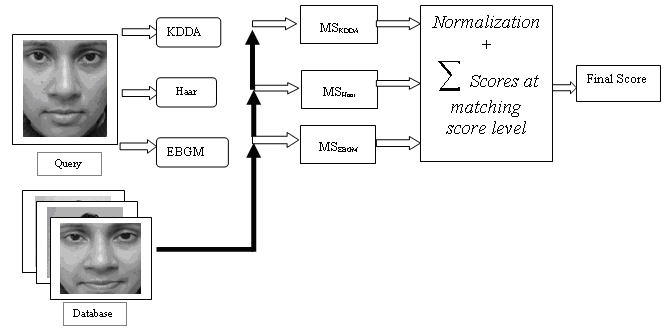Introduction
Face recognition is one of the most challenging areas in the field of computer vision. Face detection is the first step for face recognition in order to localize and to extract the face region from the background. For face detection, active contour models referred as snakes, are being used to detect the edges and for locating the face boundary. However there are some drawbacks with these models. For initialization of contour it depends on other mechanisms like interaction with users or some higher level image understanding processes to specify the approximate shape and starting position of the desired contour. Another problem with these models is that the initial contour should be closed to the boundary and should converge to concave boundaries.
Modern face recognition has reached an identification rate of greater than 90% for larger databases with well-controlled pose and illumination conditions. While this is a high rate for face recognition, it is by no means comparable to methods using keys, batches or passwords, nor can it bear direct comparison with the recognition abilities of a human concierge. Still, face recognition as an identification or authentication means could be successfully employed in many of the aforementioned tasks to support other techniques, or even replace them in the case of lower security requirements.
For face recognition, facial feature extraction algorithm is widely used. The distinguishing features found by the algorithm are used to compare images. There exist several algorithms to extract features such as Principal Component Analysis (PCA), Fisher Linear Discriminate Analysis (FLDA), Image principal component analysis (IPCA) and various others. This type of feature extraction algorithms needs manual interaction and do not consider prominent local features of a face, i.e., extracts the various facial features globally. Hence, it has the disadvantage over time and accurac
Automatic recognition is a vast and modern research area of computer vision, reaching from recognition of faces, facial expressions and gestures over related topics such as automatically detecting, locating and tracking faces, as well as extraction of face orientation and facial features, to such supporting fields as the handling of uncontrolled and uncontrollable conditions like illumination and shadows, and the 3D reconstruction of faces in particular, or the generation of new views from given imagery in general.
The development of face recognition over the past years allows an organization into three types of recognition algorithms, namely frontal, profile, and view-tolerant recognition, depending on both the kind of imagery (facial views) available, and according to the recognition algorithms. While frontal recognition certainly is the classical approach to tackle the problem at hand, view-tolerant algorithms usually treat it in a more sophisticated fashion by taking into consideration some of the underlying physics, geometry, and statistics.
Machine based face recognition is an intriguing and challenging problem for a number of reasons. Many researchers are interested in recognizing the human face and are encouraged by the wealth of application for automatic face recognition. Thus far, most system have treated face recognition as one more biometric suitable for security application, for physical access control and computer logon, or for database lookup in database of face images, such as those used by the police and passport or driving license authorities.
Methodology
For the implementation purpose a new classifier is developed. The new classifier is the fusion of Kernel Direct Discriminant Analysis (KDDA), Haar and Elastic Bunch Graph Matching (EBGM) where KDDA and Haar are holistic approaches and EBGM follows feature based approach. These three recognizers are capable of considering the problem of dimensionality by eliminating redundant features and reducing the feature space. The system can handle variations (illumination, pose, etc.) up to a significant level. The integrated system can overcome the drawbacks of individual recognizers. For example, Haar and KDDA cannot extract the exact features when someone puts a sunglass or if a big accidental or emotional change occurs but EBGM can work in these cases. The individual recognizers are combined at matching score level (as shown in Figure 1) using sum of scores technique in which the normalized matching scores of different classifiers are summed to generate a final matching score. The combined classifier is found to be 94.5% accurate.

Figure 1: Illustration of combined recognizer